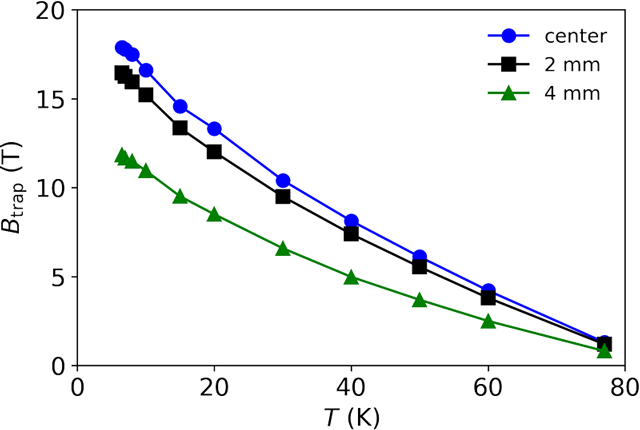WB1-5
High-Field Trapping in Stacked Coated Conductors with Enhanced Heat Capacity and Reduced Thickness
*Masahiro Suyama1, Sunseng Pyon1, Yasuhiro Iijima2, Satoshi Awaji3, Tsuyoshi Tamegai1
- Department of Applied Physics, The University of Tokyo, Japan1
- Fujikura Ltd., Japan2
- Institute for Materials Research, Tohoku University, Japan3
Cuprate superconductors REBa2Cu3O7 (RE: Rare Earth, and it is called REBCO), which have higher critical current density than other superconductors at high temperatures and high fields, are expected to be used for superconducting cables and magnets. Commercially available REBCO coated conductors (CCs), which are thin tapes, can be cut and stacked to form a stacked magnet. To date, there have been many studies on stacked magnets since they can be applied for NMR, motor, etc. Our group has fabricated a compact and high-field stacked magnet and succeeded in generating 14.8 T at 10 K [1].
In this study, we fabricated stacked magnets using EuBCO CCs with BaHfO3 nanorods (Fujikura Ltd.), and aimed at obtaining better stacked magnet than other studies. Stacked magnets can generate higher magnetic fields at lower temperatures. However, thermomagnetic instability at temperatures lower than 10 K have prevented stacked magnets from trapping high fields in our previous studies. In order to suppress thermomagnetic instability, we deposited 1 µm of lead at the surface of CCs by thermal evaporation and tried to increase heat capacity of the magnet. The specific heat of lead is 3 JK-1mol-1 at 10 K, which is 15 times larger than that of silver. So, lead is expected to contribute to increase of heat capacity efficiently. Besides, we reduced the thickness of Hastelloy substrate of CCs close to the center of the stack to enhance the engineering critical current density. As a result, we succeeded in trapping 17.89 T at 6.5 K, which is the highest trapped field ever reported.
[1] M. Suyama et al., Supercond. Sci. Technol. 34, 065004 (2021).
Fig. Temperature dependences of trapped fields measured at three positions near the center of the stacked magnet.
Keywords: REBCO, coated conductor, stacked magnet, trapped field
